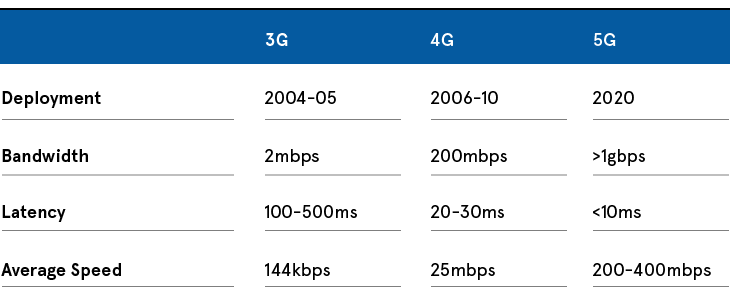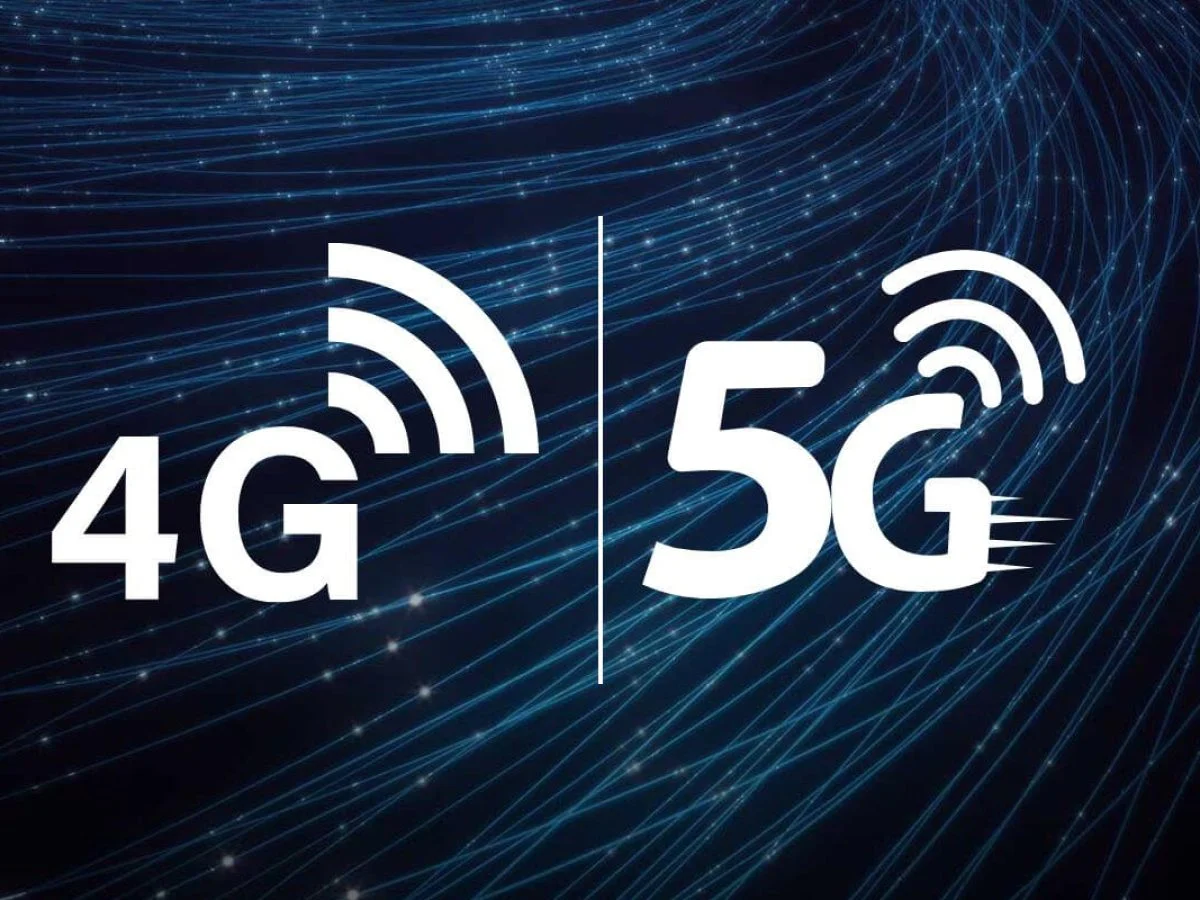The primary difference between 4G and 5G is latency. 4G vs 5G: 5G promises latency of fewer than 5 milliseconds, whereas 4G latency ranges from 60 to 98 milliseconds. Furthermore, lower latency leads to advancements in other areas, such as faster download speeds. Download speeds that could be achieved.
The Fifth Generation of Cellular Mobile Communication, or 5G, is the Next Great Technology that will soon change your mobile web experience. Read on, and learn more about the 4G vs 5G difference between 4G and 5G.
The IAG waxed lyrical about this advancement that was looming on the wireless horizon back in 2016, comparing 4G to a stop on a lengthy journey. The technological train is now pulling into the 5G stopover. Sure, this advancement in mobile communication offers even higher data rates and fewer lag times, but it also has significant ramifications for Internet of Things (IoT) applications, including “smart” buildings, cities, and automobiles.
But when it comes to prospects, ominous clouds are hanging over the mainstream use of 5G. The (over)hype is in part because of the lofty boasts MNOs (we’re looking at you, Verizon and AT&T) make while ignoring the limitations of a millimeter (mm) Wave technology, which both Big Red and the Death Star used in their respective 5G rollouts. This and other topics about the rapidly impending cybernetic “Age of Aquarius” will be covered.
A 4G standard
For their network connectivity to be deemed 4G, also known as the International Mobile Telecommunications Advanced (IMT-Advanced) specification, MNOs are required to adhere to the requirements set by the International Telecommunications Union-Radio communications sector (ITU-R).
According to these specifications, IP packet-switching protocols—rather than circuit-switched ones—must constitute the foundation of 4G networks. Additionally, 4G networks must use additional frequency domain equalization (FDE) methods or orthogonal frequency-division multiple access (OFDMA) multi-carrier transmission.
For “extremely mobile” (like cellular) and “nomadic” (like WiFi) networks, respectively, 4G “peak” data speeds must be around 100 Mbps and 1 Gbps. There must be no data loss during data handovers across different networks.
Standards for 5G
5G standards that have been finalized as of September 2019 have not yet been established. Based on global input from vendors (Ericsson, Qualcomm, Samsung, Huawei, et al.), MNOs (AT&T, Verizon, Orange, et al.), and standards organizations, the fundamental functionality and characteristics of 5G will be decided upon in 2020. (ITU, the Internet Engineering Task Force [IETF], and the 3rd Generation Partnership Project [3GPP]).
The estimated 5G latencies are at least 10 times faster than the current average 4G latencies of 50 ms. 5G speeds are 5-10 times faster than 4G (sub-6 GHz) to 100 times faster than 4G (over 30 GHz), depending on bandwidth.
Differences Between 4G and 5G
Several upgraded technologies are merged to achieve the quantum leap from 4G to 5G. The two differ in the following ways.
One example is the 5G-NR radio network. It is incompatible with 4G networks, which support 3G and even 2G. Massive MIMO, a technology that uses far more antennas than 4G MIMO and is not supported by 2G or 3G devices, contributes to 5G’s blistering speeds and ultra-low latency. When compared to 4G, 5G can transmit at significantly higher radio frequencies, which is a significant disadvantage that we’ll discuss later.
The following analogy best illustrates how 4G and 5G differ in radio coverage. Consider 4G to be a floodlight that illuminates a specific area while wasting light in areas where no one is using it. In contrast, a 5G signal is more precise. It employs cutting-edge beamforming algorithms to communicate with a destination device efficiently (and exclusively).
Furthermore, 5G transmits exponentially more data by taking advantage of the faster transmission speeds supported by the radio spectrum’s super high- (SHF) and extremely high-frequencies (EHF) bands (e.g., 28 GHz and above). Because they are currently less congested, these band waves offer significantly higher speeds and lower latencies when compared to shorter bandwidths. Although HF bands can be used for 5G, they cannot compete with the faster data rates of SHF and EHF.
In comparison to 4G, the improved interfaces of 5G enable more devices to operate in the same space. For example, whereas 4G can support approximately 4,000 devices per km2, 5G can support one million in the same area.
Another advantage of 5G over 4G is that its base stations operate in full-duplex mode, which means they transmit and receive data at the same time over the same frequency. In contrast, switching between Tx and Rx in 4G slows data rates.
Comparing 4G and 5G Networks
5G Network slicing is arguably the most important feature of 5G growth, despite being disregarded by the ordinary web user. Similar to the overlays of SDN and NFV applications, this network architecture can handle several SLRs on the same spectrum. By utilizing the creation of scalable and adaptable services, which had not yet been realized, slicing builds virtual, distinct end-to-end networks.
Although 4G network slicing is now used by carriers and end users, the sheer size of the 5G connection will far outweigh its usefulness. It’s difficult to envision how a 4G network could automate, much less do so effectively, the many tasks (such as robotics, sensors, etc.) required for a shipping port or automobile manufacturing. It’s one of the reasons no one brings up the topic of 4G networks supporting driverless vehicles.
The combination of “Lora” with network slicing will enable IoT and M2M communication across 5G LPWANs to their full potential.
Latencies in 4G and 5G

Latencies have already been discussed. The difference between 50 milliseconds and 5 milliseconds is virtually undetectable by humans, but it is significant by machines. However, ultra-low latencies have significant industrial implications for the viability of self-driving cars (also known as “automatic guided vehicles” or AGVs) and “massive-machine” communications (“Industrial” IoT). Yes, improved VR applications and the ability to download a full-length UHD movie in seconds are cool.
Despite research showing that 5G latency speeds vary, the “Big 3″—ITU, IETF, and 3GPP—have yet to produce a formal 5G latency standard. Users on a 4G network can expect latencies of around 50 ms, which is extremely good. Unless you enjoy playing video games in the cloud, these times should suffice (think Google Stadia).
According to lab tests conducted by the Global Mobile Suppliers Association (GSA) in 2018, 5G latencies ranged from 1 ms to 9-12 ms, with the vast majority falling within 1-2 ms. Because of the extremely narrow window of variation that exists, humans are unable to distinguish between these minute differences using their natural senses.
According to Verizon, 5G network latencies will be “a millisecond.” Remembering the exaggeration we mentioned earlier Be prepared for MNOs such as AT&T to use deceptive and outright deceptive marketing tactics (have you heard of the Death Star’s “5G E”? (Spoiler: It’s just rebranded 4G, not 5G) and Big Red.
Use of Bandwidth in 4G vs 5G

We hate to break your happy plans, but bandwidth will restrict the usefulness of 5G just as distance affects satellite network latency. Neville Ray, chief technology officer at T-Mobile, claims that the usage of mm-Wave spectrum, or EHF bandwidths, for 5G “will never meaningfully scale beyond small pockets of 5G hotspots in dense metropolitan contexts.”
The relevance of 5G mm-Wave technology is determined by the laws of physics, according to Ray. Similar to WiFi’s 801.11ad standard, EHF radio waves have a distance limit on how much data they can carry. Even worse, shorter bands can easily pass through glass, walls, and even partially closed doors, which impede EHF waves.
The problem is that the mm-wave spectrum’s propagation makes 5G’s blistering speeds conceivable. Therefore, even though 5G can operate over lower bandwidths, data rates won’t be anywhere as fast as the ludicrous claims MNOs like Verizon and AT&T make. Additionally, user capacity and data will also suffer. It’s significant because Apple is not going to release a 5G-capable iPhone until at least late 2020.
Counterpoint
People who remember the 4G rollout a decade ago (and its exaggerated marketing) will recall that networks took years to reach the current level of coverage. Currently, only 70% of Americans have access to 4G speeds.
Given the massive number of new radio base stations required, it will be decades before 5G has the same level of coverage as 4G. The transition to widespread use of 5G will be an exorbitantly expensive endeavor requiring massive infrastructure expansions. As a result, 4G is likely to remain popular for some time.
Fortunately, even if AT&T refers to it as “5G E,” LTE technology will advance. As a result, because the 5G layover appears to be lengthy, you can get off the technology train for a while.
